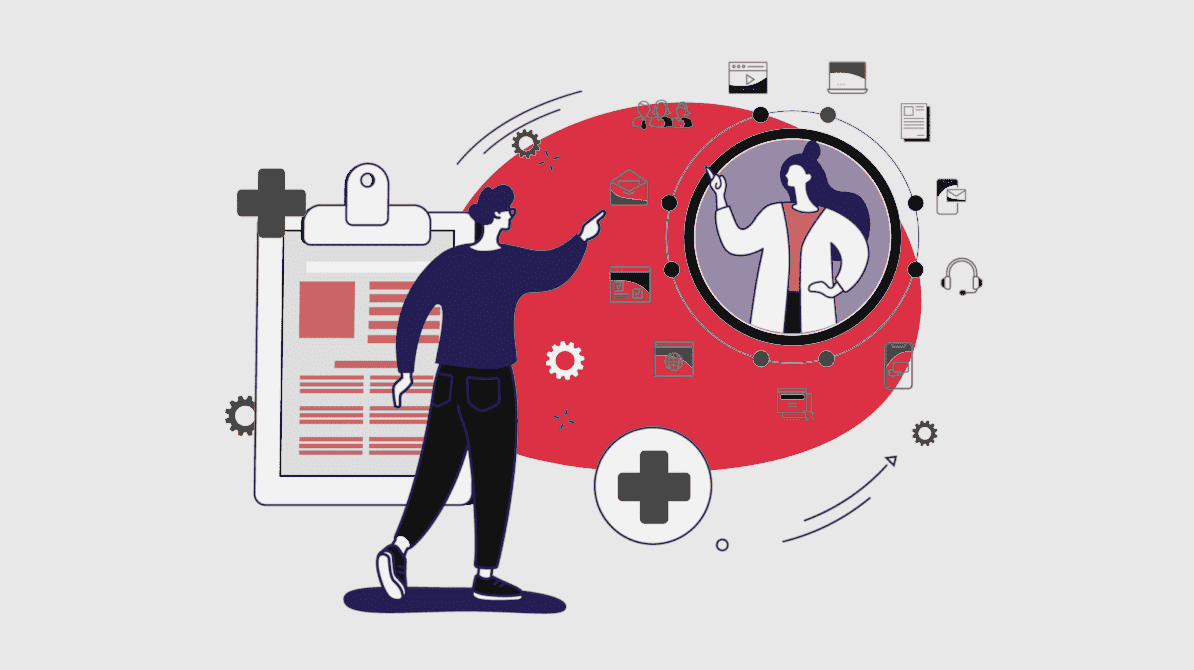The Pharmaceutical industry welcomes a new world of learning.
The pandemic has forced all sectors to make tough adjustments, and pharma has faced the biggest challenges due to its more cautious approach to digital transformation. Now, although it has been difficult to gain insights, there is an emerging class of excellence that focuses on a greater understanding of both knowledge gaps and how, when and where that knowledge will be consumed by HCPs.
Change is always a difficult process for most organizations, and many of them are still adjusting. All companies were somewhere on a digital transformation journey, but no one envisaged the amount of change we have experienced over a short period.
The good news is, after the initial panic, there is now a clear understanding that there are opportunities, as well as challenges.
HCP engagement has become more focused and meaningful, showing that HCPs still want contact and information, but the demand is for the content to be consumed according to their preferences and needs, which adds more pressure on medical communications to deliver programs with extra precision.
In this new era of medical communications, excellence is achieved by combining relevant content with the right channel and timing. The extra element added to the mix is the need to target messaging to each HCP or group of HCPs.
Pharma is adapting quickly
The content output of Medical Communications programs has definitely evolved to a new model, one that many companies and agencies have already added to their strategies: podcasts, short movies, and quick webinars that can be downloaded during downtime or off work hours will boost interest and draw in HCPs rather than overwhelming them.
Digital and social media are both a significant and lasting influence across the sector. It is technically easier to communicate through those channels, and every pharma company is now racing to focus on a more optimized and targeted delivery, which is where segmentation comes in, so HCPs are targeted through relevance, not by volume, and with a fluid experience.
Expect that campaigns will have to go through regular tweaks in order to secure interest and generate traction. Utilizing digital analytics to measure outputs across impressions, engagement rates, video views, downloads, shares and retweets is paramount to allow content to be finessed to drive action and change in target audiences.
Authenticity is key
The best-performing content is not always shiny or polished. Authentic content often outperforms the over-produced.
Take videos, for example. A few years ago, videos would involve a film crew, a big production with a soundtrack and ultra-rehearsed scripts, but now there is a definite shift to authenticity with unstaged videos that resonate with HCPs on a different level through the use of storytelling.
The more targeted and authentic the industry's communications are, the more likely it is to fill knowledge gaps and earn the respect of health care professionals.
Snackable experiences
In this scenario, smaller, snackable content will generally perform better. For example, a one-minute video that attracts HCP interest can link through to a five-minute explainer video that might not have worked if it had been the first point of contact. HCPs are also unlikely to read long and complex pieces of copy.
Pharma's relationship with target audiences has tended to be more conservative than consumer categories, for obvious reasons, but there is now a higher demand for innovation in the industry. Pharma is embracing the benefits of a faster pace, and utilizing the technology that is available and already in use by other industries for many years in order to achieve effective targeting with the right content through the right channels.
Pharma Influencers
The pharma industry is increasingly using social media as a tool to influence public opinion. With more people seeking out health-related advice online, health influencers are becoming more popular. Both patients and healthcare professionals are using social media to communicate with each other, raise awareness about issues, and promote tools and therapies. As an example, LinkedIn data shows that there was a 30% increase in healthcare conversations on its platform in 2021 compared to the year before.
Influencers in the pharmaceutical space used to be highly regarded experts that we know as ‘Key Opinion Leaders (KOLs). What we see now is a shift to people who are maybe less senior, but are well and broadly connected. They operate like online influencers in any other category, except they are healthcare professionals.
The industry is still trying to work out who these people are, and how to – or whether to – engage with them. So it’s a case of identifying and understanding what content they react to and how they share it, and the challenges and opportunities that this new audience group represents.
The industry is still trying to work out who these people are, and how to – or whether to – engage with them. So it’s a case of identifying and understanding what content they react to and how they share it, and the challenges and opportunities that this new audience group represents.
Maximizing return on investment
The new era of digital or hybrid communications needs to have greater attention paid to audience segmentation, and deeper measurement and evaluation to unlock its true value.
Ultimately, this is about maximizing return on investment. If high investments are being made, then deeper measurement and evaluation are needed to unlock the true value of digital or hybrid communications.
As the market is increasingly more fragmented regarding what clients want and how they want it, more developments are expected over the coming years.
The grounds will continue to shift, and analyzing target audiences to understand their specific needs for content and making it available when, where and how they want, it will form the foundations of medical communications greatness.
References/Source/Inspiration

